Instruction
Understanding ball position and how it can help your swing
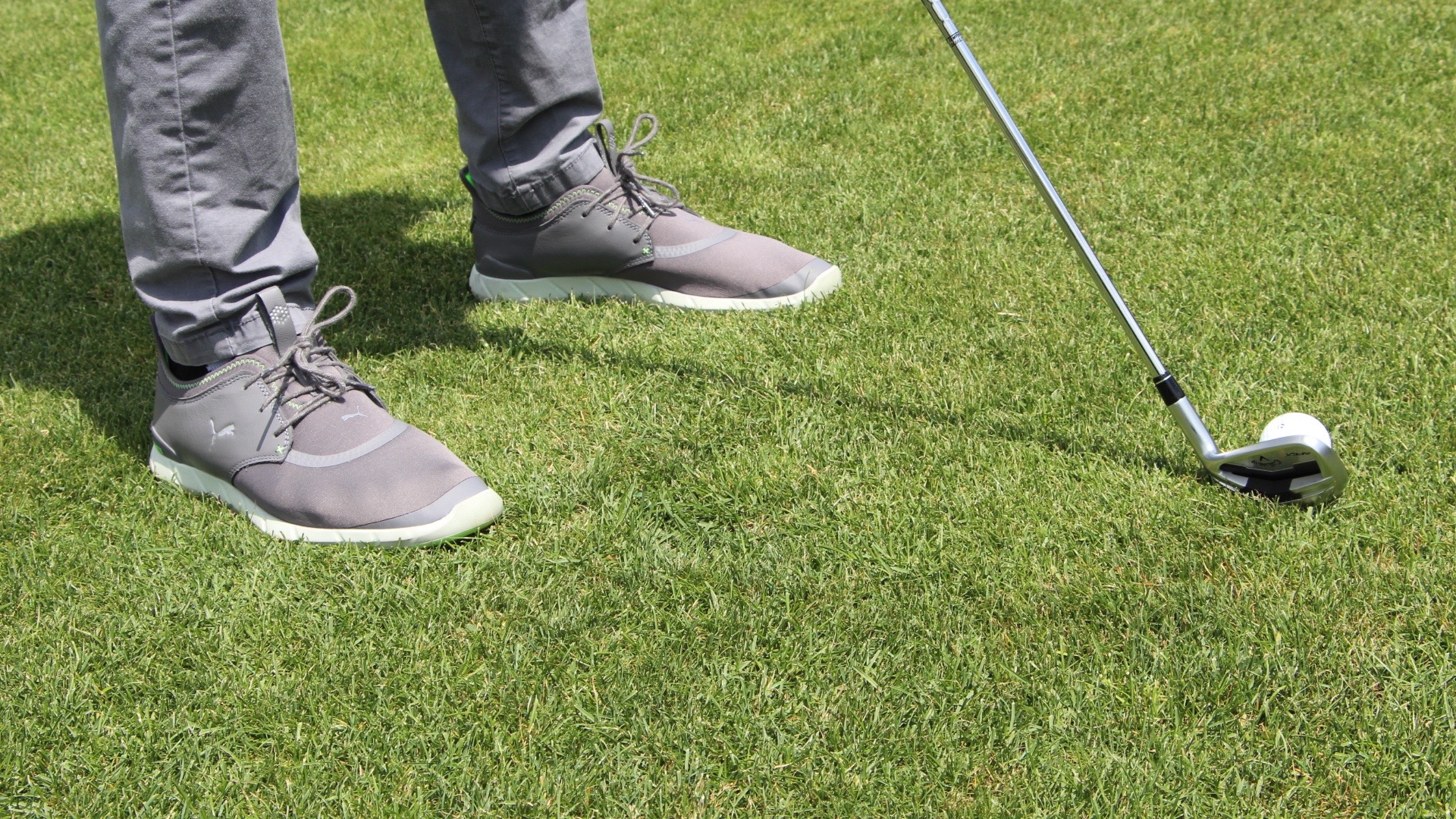
In my experience, the most underrated part of setting up to the golf ball is without a doubt ball position. If a golfer moves the golf ball so much as ONE BALL (that’s 1.68 inches) up or back in the stance, the flight of the ball can change drastically.
A Neutral Ball Position
A Forward Ball Position
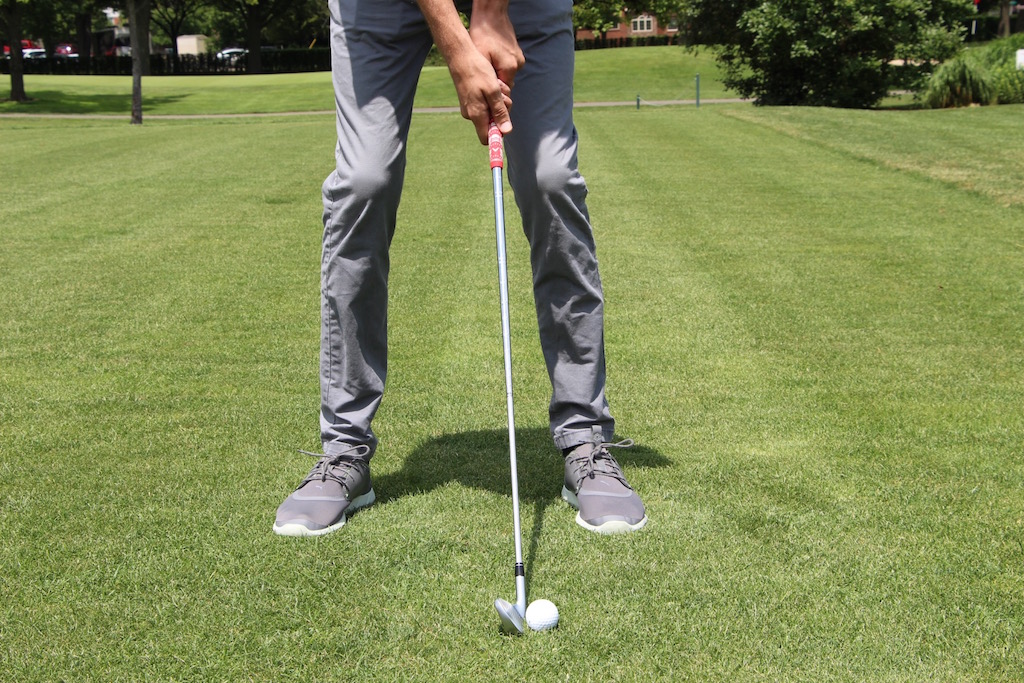
A Rearward Ball Position
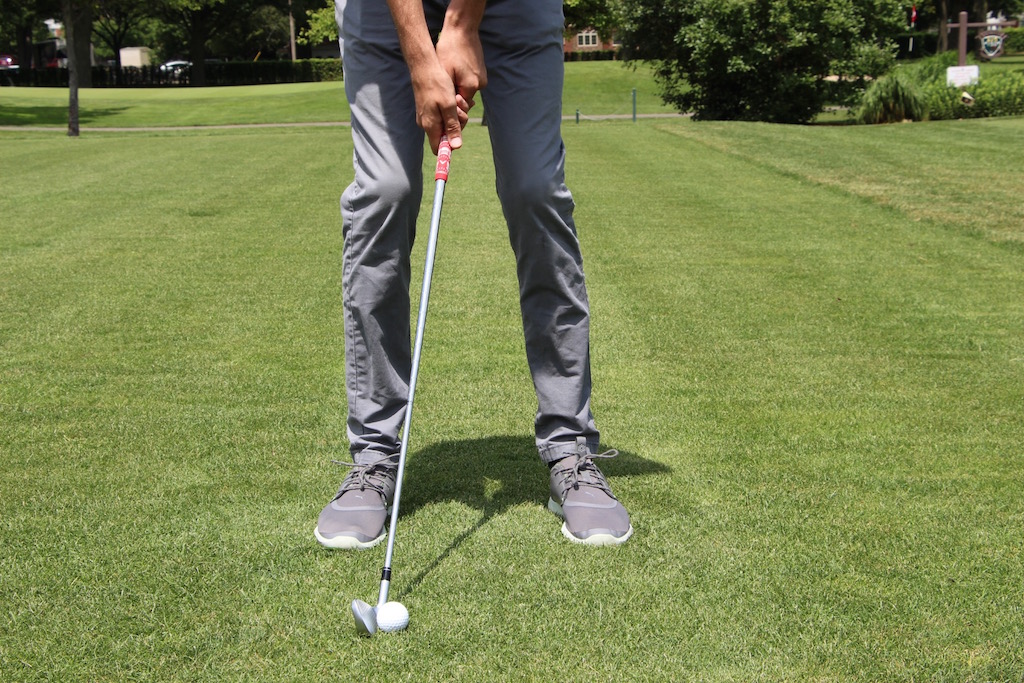
Golfers tend to position the golf ball in their stance where they most often find it, that is, bottom out with their swing. So as soon as I see a player hitting balls, I know what his/her swing path is simply by where they place the ball in their stance.
Those who swing in-to-out generally have rearward ball positions, and they’re usually golfers who hook the ball. Those who swing out-to-in often have more forward ball positions, and they’re usually players who slice the ball. It’s no coincidence, because ball position can determine the hook or slice spin that occurs during the shot, as well as dynamic loft.
The easiest way to picture this is by understanding that the golf club swings in an ARC. Golf is a side-on game, and in any side-on game one cannot hit a ball that is across from them with a straight-line swing. If we played golf with the ball between our feet, then and only then could we have a straight-line swing; but because the golf club swings on an arc, where we position the ball in the stance matters. A lot. It determines whether we are going to meet the ball early in the arc, in the middle of the arc, or forward in the arc.
Now let’s look at those three conditions.
Meeting the golf ball early in the swing arc
- For a right-handed player, this means the club is traveling to the right of the target. Here we can get pushed shots, hooks (from the club face being too closed to the path) and a low ball flight, which occurs from the de-lofting of the club face.
Meeting the golf ball in the middle of the swing arc
- In the middle of the arc, golfers have the best chance of starting the golf ball where they are aimed with little-to-no curvature. That’s because the club face has a good chance of being square to the path, and creating a decent trajectory.
Meeting the golf ball late in the swing arc
- And when golfers contact the golf ball late in the arc, they can get some pulls, slices (from a club that path that is moving left of the club face) and higher shots due to increased loft on the club face.
Here’s What Else You Need to Know About Ball Position
Spin: Place three balls on the ground; one across from your rear foot, one in the center, and one across from your left foot. All things being equal, you will push-hook the first one, hit the second one straight and pull/slice the third one. Pretty much every time. Remember, the face-to-path relationship can change dramatically with a ball position change of only a few inches.
Face contact: Here’s another underrated ball position dynamic: On the arc we are discussing, the in-to-out path is traveling AWAY from the player and on the out-to-in path the club is traveling IN to the player. This is why a good number of shanks are hit from an in-to-out path and toe hits often happen as a result of an out-to-in path. Think about it: If golfers are swinging out to in with a reverse pivot and the ball forward, they can actually miss the golf ball INSIDE!
Attack angle: Any golf club that is moving to the right is also moving down (again for a right-handed player) and one moving left is beginning to ascend. So if you’re fighting too steep an attack angle, a slight move forward can help and vice versa.
Dynamic loft: The sooner you catch the ball in the arc, the less loft you have on the golf club; the later, the more lofted the club face is. This is critical to understand because of the body’s reaction to trajectory. If the golf ball is too far back, you’ll hit it low and you’ll attempt to hit it higher by “backing up,” or reversing the torso away from the target, in an effort to hit it higher. It might just be easier to move the ball forward a bit and maintain your spine angle.
Takeaways
So you see how many things are affected by ball position. Ask any of the very capable players I work with and they’ll tell you the same thing. That’s why before I even look at the path, plane, release, etc., I always check the ball position. You may want to do the same.
Simple fixes: Hooking the ball? Move it forward. Slicing the ball? Move it back! One more thing: try a drastic change at first, and then modify it to be less drastic if you must.
One drill I use to change swing path is a dramatic ball position alteration simply to get the student to react differently in the downswing. I had a fella today WAY over the top. We moved the ball to his rear foot in the stance, and immediately he started to get his arms and club down more from the inside. It works, try it!
If you’re interested in my online swing analysis program, click here for more info, or click here to contact me on Facebook.
- LIKE366
- LEGIT45
- WOW13
- LOL6
- IDHT11
- FLOP9
- OB2
- SHANK32
Instruction
The Wedge Guy: The easiest-to-learn golf basic

My golf learning began with this simple fact – if you don’t have a fundamentally sound hold on the golf club, it is practically impossible for your body to execute a fundamentally sound golf swing. I’m still a big believer that the golf swing is much easier to execute if you begin with the proper hold on the club.
As you might imagine, I come into contact with hundreds of golfers of all skill levels. And it is very rare to see a good player with a bad hold on the golf club. There are some exceptions, for sure, but they are very few and very far between, and they typically have beat so many balls with their poor grip that they’ve found a way to work around it.
The reality of biophysics is that the body moves only in certain ways – and the particulars of the way you hold the golf club can totally prevent a sound swing motion that allows the club to release properly through the impact zone. The wonderful thing is that anyone can learn how to put a fundamentally sound hold on the golf club, and you can practice it anywhere your hands are not otherwise engaged, like watching TV or just sitting and relaxing.
Whether you prefer an overlap, interlock or full-finger (not baseball!) grip on the club, the same fundamentals apply. Here are the major grip faults I see most often, in the order of the frequency:
Mis-aligned hands
By this I mean that the palms of the two hands are not parallel to each other. Too many golfers have a weak left hand and strong right, or vice versa. The easiest way to learn how to hold the club with your palms aligned properly is to grip a plain wooden ruler or yardstick. It forces the hands to align properly and shows you how that feels. If you grip and re-grip a yardstick several times, then grip a club, you’ll see that the learning curve is almost immediate.
The position of the grip in the upper/left hand
I also observe many golfers who have the butt of the grip too far into the heel pad of the upper hand (the left hand for right-handed players). It’s amazing how much easier it is to release the club through the ball if even 1/4-1/2″ of the butt is beyond the left heel pad. Try this yourself to see what I mean. Swing the club freely with just your left hand and notice the difference in its release from when you hold it at the end of the grip, versus gripping down even a half inch.
To help you really understand how this works, go to the range and hit shots with your five-iron gripped down a full inch to make the club the same length as your seven-iron. You will probably see an amazing shot shape difference, and likely not see as much distance loss as you would expect.
Too much lower (right) hand on the club
It seems like almost all golfers of 8-10 handicap or higher have the club too far into the palm of the lower hand, because that feels “good” if you are trying to control the path of the clubhead to the ball. But the golf swing is not an effort to hit at the ball – it is a swing of the club. The proper hold on the club has the grip underneath the pad at the base of the fingers. This will likely feel “weak” to you — like you cannot control the club like that. EXACTLY. You should not be trying to control the club with your lower/master hand.
Gripping too tightly
Nearly all golfers hold the club too tightly, which tenses up the forearms and prevents a proper release of the club through impact. In order for the club to move back and through properly, you must feel that the club is controlled by the last three fingers of the upper hand, and the middle two fingers of the lower hand. If you engage your thumbs and forefingers in “holding” the club, the result will almost always be a grip that is too tight. Try this for yourself. Hold the club in your upper hand only, and squeeze firmly with just the last three fingers, with the forefinger and thumb off the club entirely. You have good control, but your forearms are not tense. Then begin to squeeze down with your thumb and forefinger and observe the tensing of the entire forearm. This is the way we are made, so the key to preventing tenseness in the arms is to hold the club very lightly with the “pinchers” — the thumbs and forefingers.
So, those are what I believe are the four fundamentals of a good grip. Anyone can learn them in their home or office very quickly. There is no easier way to improve your ball striking consistency and add distance than giving more attention to the way you hold the golf club.
More from the Wedge Guy
- The Wedge Guy: Golf mastery begins with your wedge game
- The Wedge Guy: Why golf is 20 times harder than brain surgery
- The Wedge Guy: Musings on the golf ball rollback
- LIKE84
- LEGIT13
- WOW5
- LOL1
- IDHT0
- FLOP4
- OB1
- SHANK8
Instruction
Clement: Stop ripping off your swing with this drill!

Not the dreaded headcover under the armpit drill! As if your body is defective and can’t function by itself! Have you seen how incredible the human machine is with all the incredible feats of agility all kinds of athletes are accomplishing? You think your body is so defective (the good Lord is laughing his head off at you) that it needs a headcover tucked under the armpit so you can swing like T-Rex?
- LIKE0
- LEGIT2
- WOW2
- LOL0
- IDHT0
- FLOP0
- OB0
- SHANK2
Instruction
How a towel can fix your golf swing

This is a classic drill that has been used for decades. However, the world of marketed training aids has grown so much during that time that this simple practice has been virtually forgotten. Because why teach people how to play golf using everyday items when you can create and sell a product that reinforces the same thing? Nevertheless, I am here to give you helpful advice without running to the nearest Edwin Watts or adding something to your Amazon cart.
For the “scoring clubs,” having a solid connection between the arms and body during the swing, especially through impact, is paramount to creating long-lasting consistency. And keeping that connection throughout the swing helps rotate the shoulders more to generate more power to help you hit it farther. So, how does this drill work, and what will your game benefit from it? Well, let’s get into it.
Setup
You can use this for basic chip shots up to complete swings. I use this with every club in my bag, up to a 9 or 8-iron. It’s natural to create incrementally more separation between the arms and body as you progress up the set. So doing this with a high iron or a wood is not recommended.
While you set up to hit a ball, simply tuck the towel underneath both armpits. The length of the towel will determine how tight it will be across your chest but don’t make it so loose that it gets in the way of your vision. After both sides are tucked, make some focused swings, keeping both arms firmly connected to the body during the backswing and follow through. (Note: It’s normal to lose connection on your lead arm during your finishing pose.) When you’re ready, put a ball in the way of those swings and get to work.

Get a Better Shoulder Turn
Many of us struggle to have proper shoulder rotation in our golf swing, especially during long layoffs. Making a swing that is all arms and no shoulders is a surefire way to have less control with wedges and less distance with full swings. Notice how I can get in a similar-looking position in both 60° wedge photos. However, one is weak and uncontrollable, while the other is strong and connected. One allows me to use my larger muscles to create my swing, and one doesn’t. The follow-through is another critical point where having a good connection, as well as solid shoulder rotation, is a must. This drill is great for those who tend to have a “chicken wing” form in their lead arm, which happens when it becomes separated from the body through impact.
In full swings, getting your shoulders to rotate in your golf swing is a great way to reinforce proper weight distribution. If your swing is all arms, it’s much harder to get your weight to naturally shift to the inside part of your trail foot in the backswing. Sure, you could make the mistake of “sliding” to get weight on your back foot, but that doesn’t fix the issue. You must turn into your trial leg to generate power. Additionally, look at the difference in separation between my hands and my head in the 8-iron examples. The green picture has more separation and has my hands lower. This will help me lessen my angle of attack and make it easier to hit the inside part of the golf ball, rather than the over-the-top move that the other picture produces.


Stay Better Connected in the Backswing
When you don’t keep everything in your upper body working as one, getting to a good spot at the top of your swing is very hard to do. It would take impeccable timing along with great hand-eye coordination to hit quality shots with any sort of regularity if the arms are working separately from the body.
Notice in the red pictures of both my 60-degree wedge and 8-iron how high my hands are and the fact you can clearly see my shoulder through the gap in my arms. That has happened because the right arm, just above my elbow, has become totally disconnected from my body. That separation causes me to lift my hands as well as lose some of the extension in my left arm. This has been corrected in the green pictures by using this drill to reinforce that connection. It will also make you focus on keeping the lead arm close to your body as well. Because the moment either one loses that relationship, the towel falls.


Conclusion
I have been diligent this year in finding a few drills that target some of the issues that plague my golf game; either by simply forgetting fundamental things or by coming to terms with the faults that have bitten me my whole career. I have found that having a few drills to fall back on to reinforce certain feelings helps me find my game a little easier, and the “towel drill” is most definitely one of them.
- LIKE12
- LEGIT2
- WOW2
- LOL0
- IDHT0
- FLOP2
- OB0
- SHANK8
-

 19th Hole5 days ago
19th Hole5 days agoDave Portnoy places monstrous outright bet for the 2024 Masters
-

 19th Hole3 weeks ago
19th Hole3 weeks agoJohn Daly stuns fans into silence with brutal opening tee shot on PGA Tour Champions
-

 19th Hole2 weeks ago
19th Hole2 weeks agoThings got heated at the Houston Open between Tony Finau and Alejandro Tosti. Here’s why
-

 19th Hole6 days ago
19th Hole6 days agoTiger Woods arrives at 2024 Masters equipped with a putter that may surprise you
-

 19th Hole2 weeks ago
19th Hole2 weeks agoReport: Tiger Woods has ‘eliminated sex’ in preparation for the 2024 Masters
-

 19th Hole3 weeks ago
19th Hole3 weeks agoCharlie Woods finds it tough going on American Junior Golf Association debut
-

 19th Hole2 weeks ago
19th Hole2 weeks agoAddiction, spinal fusion, and scam artists – Everything Anthony Kim revealed in candid interview with David Feherty
-

 19th Hole1 week ago
19th Hole1 week agoAnthony Kim says doctors told him that he ‘may not have much time left’ ahead of LIV return


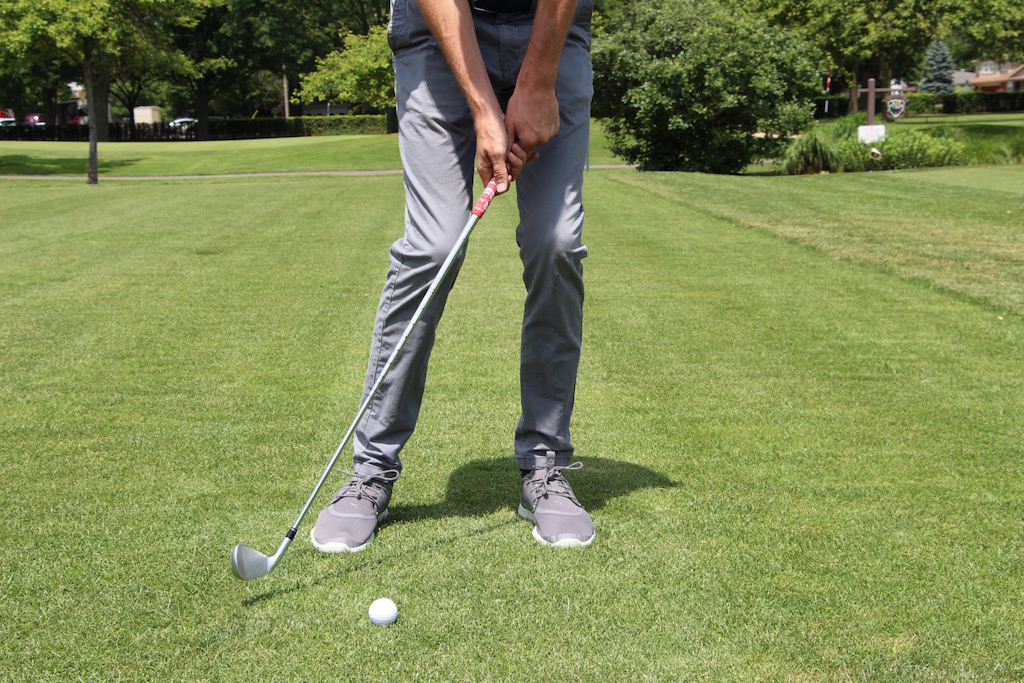
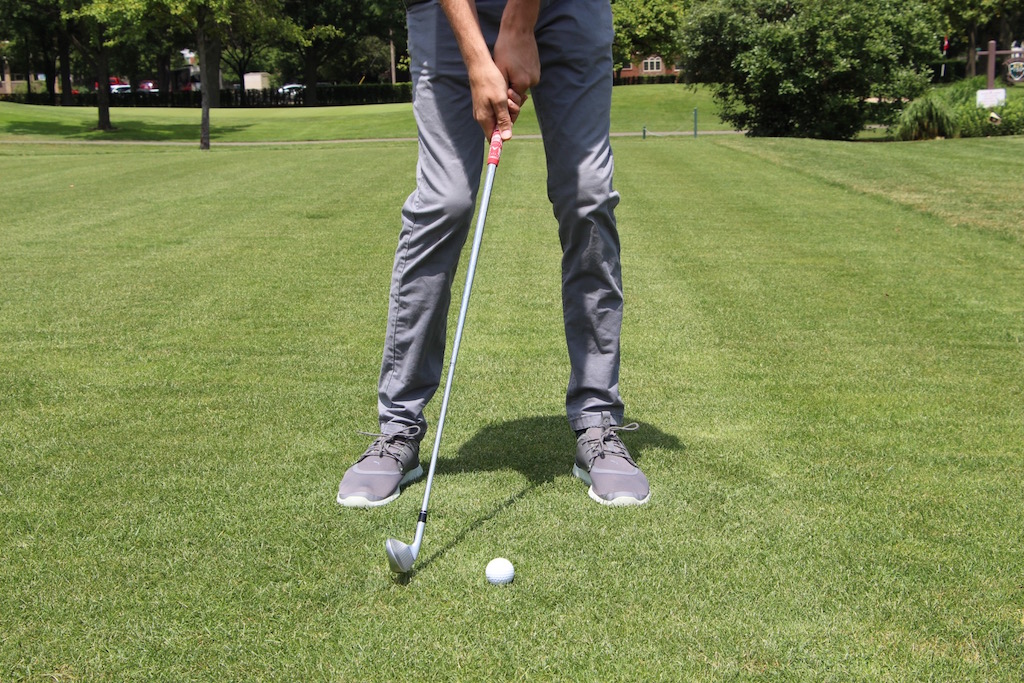
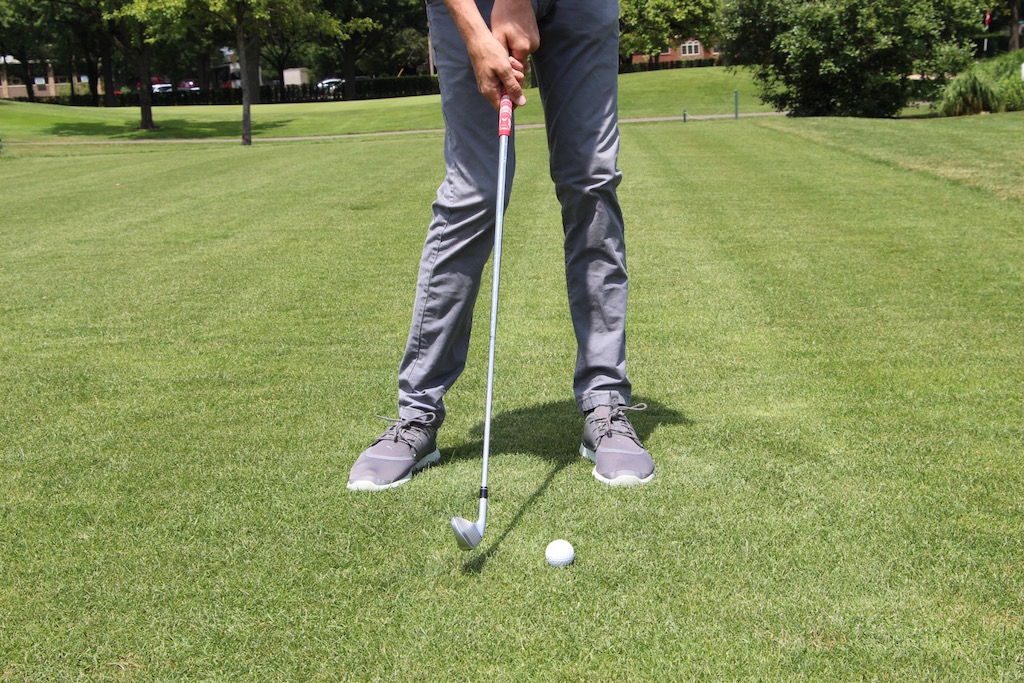
















Tom
Aug 3, 2016 at 11:19 pm
Let me just say that this is the single greatest piece of advice I’ve ever received. Thank you. I saw it this morning first on one of your articles from a number of years ago. I was fooling how to fix an inside-out swing path.
I am a 7 handicap and had been looking for a solution to fix my ever-present hook. My iron divots were always about 15 degrees to the right of my target line. If I consciously “swung left” I could get them to be almost straight, but it took a lot of effort.
I hit probably 100 balls at the range today with every one a few inches in front of my left foot. Tonight, I played 9 holes from the back tees in +3. The biggest difference was on my driver. Almost every one went straight. It was really unbelievable. My long irons were much improved with less of a hook although I did hit some quite thin. The wedges were hard to hit that far forward so I pulled them back to inside my left heel. B
I can’t tell you what a difference this made. How long should I hit like this before gradually pulling things back to inside the left heel on the longer clubs? A week? Never? Is it necessary to play the shorter clubs that much forward?
Thanks again!
claud balls
Aug 9, 2020 at 4:38 pm
I am way over the top and steep – so you say move it back for the first issue and move it forward for the second issue ???
Jeremy
Jul 27, 2016 at 8:44 pm
Does this apply to the driver too?
Troy Vayanos
Jul 18, 2016 at 12:01 am
Most golfers I see have the golf ball too far back in their stance. Because they hit the ball fat it’s a knee jerk reaction to try make solid contact with the golf ball. The thinking is they will get the ball closer to where the club is bottoming out.
However, like all golf fixes this doesn’t solve the problem and usually makes it worse.
For me, putting the ball just forward of centre works well for all your irons and even further forward for the driver. If you’re shifting your weight correctly to the back and then to the front leg your club should naturally bottom out in the same forward position every time.
Dennis Clark
Jul 14, 2016 at 6:32 pm
This is also why I have a lot of my students who fight an in-to-out hook hit drivers off the ground with the ball positioned well forward. You’ll drop kick a few but your path will change considerably
Tim
Jul 14, 2016 at 5:26 pm
This 100% works. I’ve always gone through stretches where I hook every shot. And I’ve always hit it low. I tried countless tips and drills. Eventually I discovered that by far the most effective and easy one was moving the ball up in my stance. Now if I could just remember to keep it forward..
Charles
Jul 14, 2016 at 12:59 pm
Interesting. I’m an old school guy. I was taught a long time ago, back in 1974, to hit a draw tee it higher and place the ball farther forward and close the club, to fade tee it lower and place the ball back and open the face. It worked well with my persimmon wood driver and balata balls. It also worked well with modern drivers and balls. What has changed in golf instruction?
Dennis Clark
Jul 14, 2016 at 6:27 pm
What has changes Charles is science. I too am an old school guy, and was taught under the OLD ball flight laws. Read my article on D Plane, or any article on it; it explains it quite nicely. BTW I also suffered under this illusion as a teacher for some years. But I always knew “something” was “missing”. Thx for reading
Mikky Tee
Jul 14, 2016 at 5:43 am
Dennis, good read. I usually move the ball a little back towards my right foot, to prevent me hitting it fat, i seem to have a rearward low point, is that weight transfer perhaps?
Dennis Clark
Jul 14, 2016 at 7:30 am
Shallow fats are usually too early of a release or too inside. Try turning through would help yes, staying more centered over the golf ball might help as well.
ButchT
Jul 13, 2016 at 9:59 pm
Very good insight, Dennis. Thank you!
cgasucks
Jul 13, 2016 at 9:53 pm
When I started this game long ago, I was taught that if have your hands in the same position relative to your legs, your ball will be in the optimal ball position no matter which club is used and what shot (including pitches and chips).
Dennis Clark
Jul 14, 2016 at 12:24 am
I would mostly agree with that theoretically…That’s why pre-shot is so critical.
Dennis Clark
Jul 13, 2016 at 6:36 pm
Authors note: For those of you hooking the ball, move it forward-and keep moving it forward until you’ve actually got the club swinging more LEFT (for right-handers). You’ll begin to see a fade soon. Guaranteed.
Dennis Clark
Jul 13, 2016 at 2:35 pm
Yes lead foot as in way out front…it’ll help you turn through better
Steven
Jul 13, 2016 at 2:22 pm
Good article. It is interesting that ball position can make such a huge impact on flight. That assumes the swing is the same and the player doesn’t make compensations when the ball is in a different place. As I am sure everyone would suggest, most people should go to a pro or video their swing to send to someone to look at ball position in relation to the swing. Many amateurs probably have more things off in the swing than just ball position. This could be a good short term fix.
Keep up the good work helping out all of us.
Robert
Jul 13, 2016 at 11:42 am
@Tom I was thinking the same thing.
@Dennis, I have an high positive club path (+6 to +9). Any idea how to fix that Dennis?
Dennis Clark
Jul 13, 2016 at 1:47 pm
First of all decide if the path NEEDS to be fixed…Bubba, Rory and some others have an unusually high + path; it works well for them. But if you’re hitting blocks and hooks, try hitting some drivers off the ground with the ball across from your lead foot.
Robert
Jul 13, 2016 at 2:07 pm
My miss is a hook and when I hook it with the driver, I usually fall back on my rear foot which to me, says I’m not shifting my weight properly. With regards to that drill, do you mean parallel across from my lead front.
Tom
Jul 13, 2016 at 10:30 am
interesting article. Time for me to do some experimenting.
Dennis Clark
Jul 13, 2016 at 11:40 am
experiment is the right way! The only way really.
Tom
Jul 14, 2016 at 11:17 am
I did last night. Your right the ball forward gave me a gentle left to right ball flight.